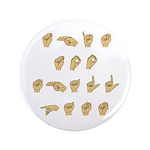13 unable to perform
I hate it when I’m unable to perform
I remember seeing this same thumb ages ago and it was mentioned that while it was originally developed to help the disabled, it was also surprisingly useful to the normally abled as well. What I really want to know is when will I be able to get one for myself
Don’t. I already did a little write up about this a while ago, I work in orthotics and prosthetics.
This device was created by an 3d printer artist and tested by a cognitive science lab. It’s really not a medical device, and wasn’t tested to the same degree that medical devices are subjected too.
When testing devices that are actually made to help the disabled, the criteria isn’t just that the pt can utilize it, but that the utilization the device provides is greater than what the patient would be able to do without it.
None of the actions done by the second thumb are things you wouldn’t be able to do as an amputee in the first place. People are highly adaptive and will figure out ways to utilize their body or what’s left of their amputated limbs.
There are a few reasons this will never be utilized by disabled people. The largest one being that foot controls aren’t ever used in upper limb prosthetics, mainly because they only work when you are sitting, or standing still. If this has been made by a prosthetic lab they would have used myoelectrics, the same tech we’ve had for like 40 years.
Secondly, how is an amputee or disabled person going to don this device by themselves. A medical device that’s meant to give you more independence also requires help to put on?
And lastly, the main benefit of having a thumb in the first place is that it is opposible. The thumb isn’t really useful by itself, it’s meant to work in conjunction with other fingers for manipulation. If you wanted another place to hold or pin something in place you would just stick it in the crease of your elbow.
It’s a neat art project, but pretty limited as far as a prosthetic device. My main criticism is for the cognitive lab that partnered with the artist in the first place. The university is using this as a marketing device for their department, and shouldn’t be claiming it’s a medical device. If they were serious about it they would be partnering with actual orthotist or prosthetist or a biomedical engineering department, not cognitive science.
There are versions online that you can 3d print already
Disabled individuals would especially benefit from this as the device can help them perform complex tasks with just one hand without the need to harmonize with other individuals.
But performing complex tasks while singing makes them more fun!
Evolution: “Am I a fucking joke to you?”
pressure from the right toe pulls the Thumb across the hand, while the pressure exerted with the left toe pulls the Thumb up toward the fingers. By applying pressure with their toes, users can move the Thumb across their hand or up toward their fingers.
What happens when you walk?
Push the thumb up yer bum and find out
This is why everything goes to crabs, 4 fucking thumbs of pinch
Video of the tech: https://www.youtube.com/watch?v=UI-t21QcXM4






